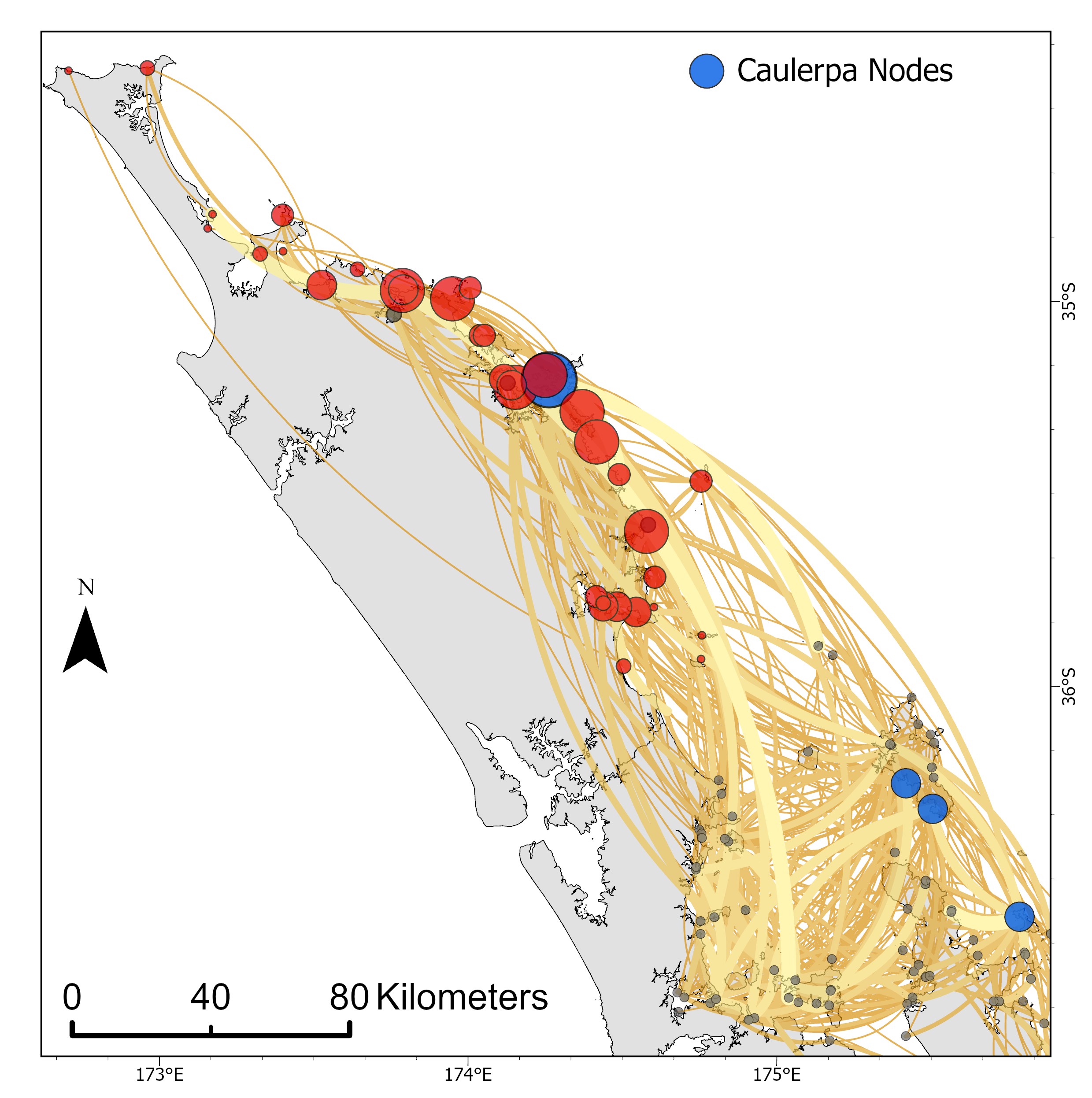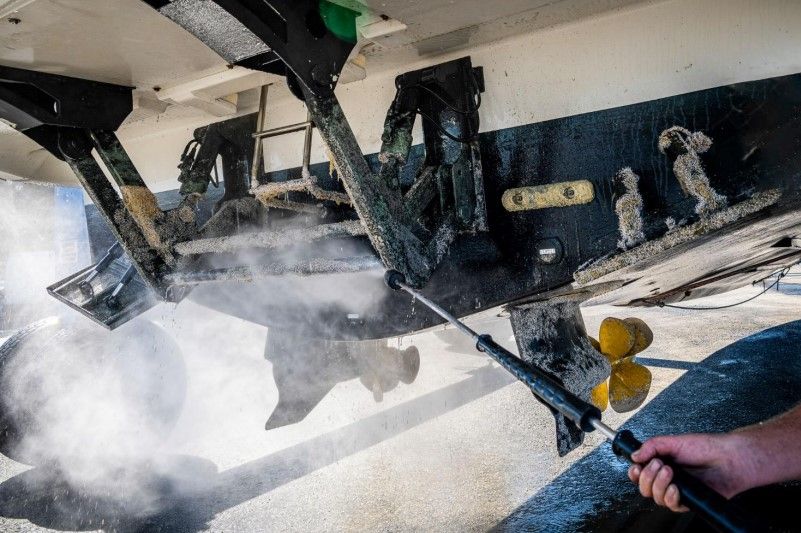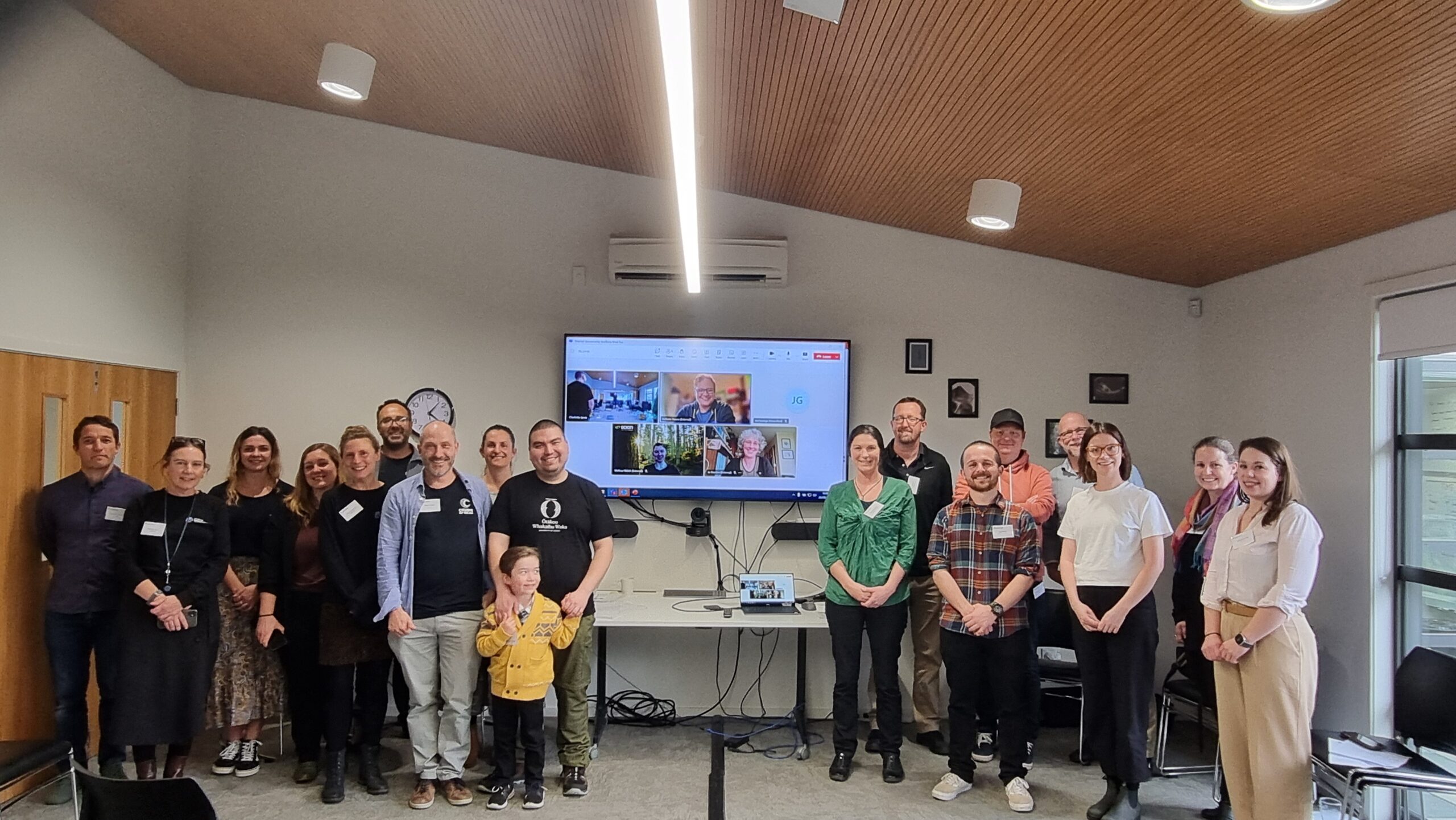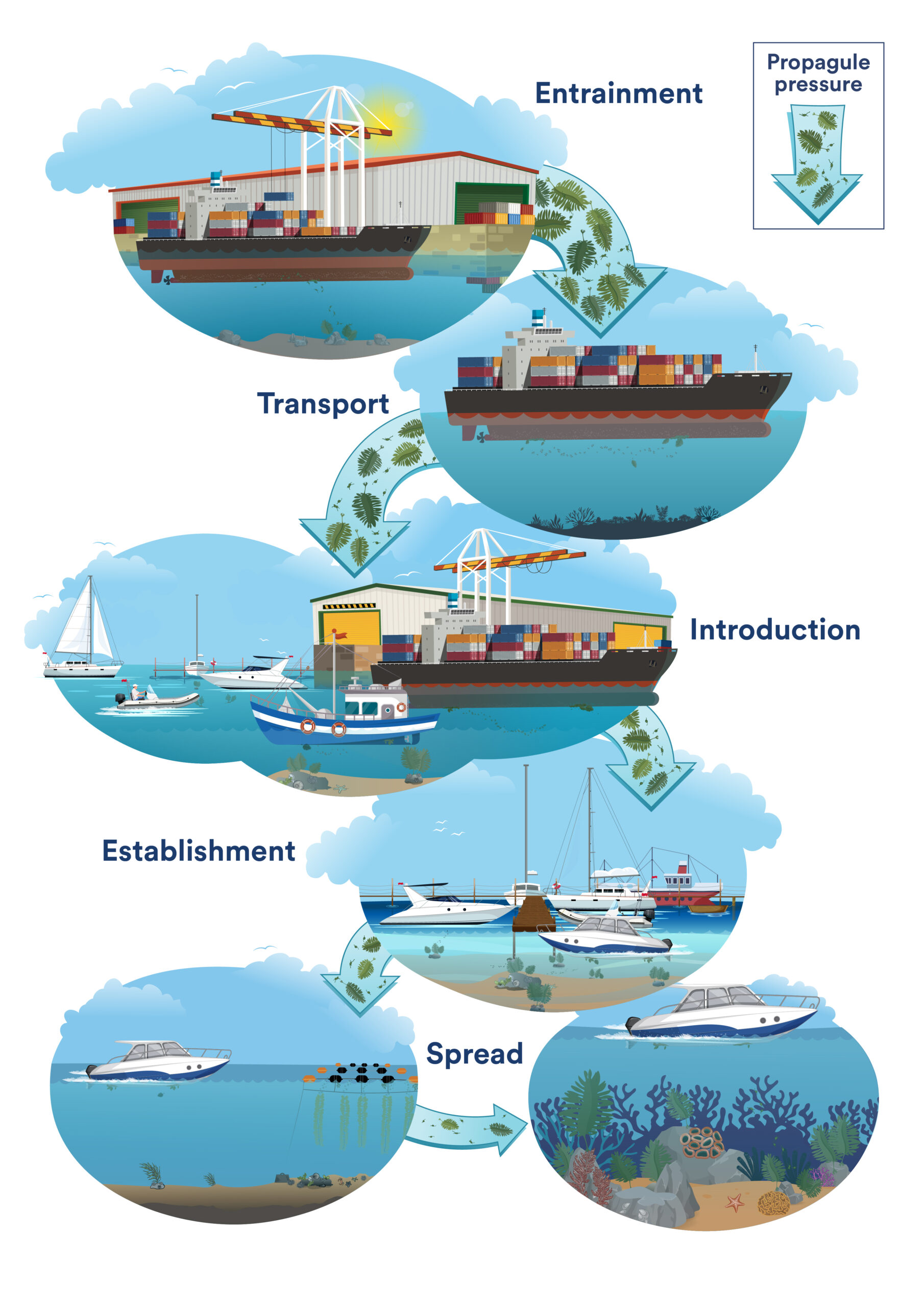Last year over 700 boat owners who have non-trailered boats moored in marinas around Aotearoa…
Prioritising surveillance sites for exotic Caulerpa in Northland
The spread and associated impacts of the non-indigenous seaweed ‘exotic Caulerpa’ are of great concern to all stakeholders in Aotearoa New Zealand’s marine environment, in particular the northern regions. In May 2023, exotic Caulerpa was known to occur in only a small number of harbours around Great Barrier Island / Aotea (GBI), and Great Mercury Island / Ahuahu (GMI). Exotic Caulerpa can be readily entangled and spread via vessels’ anchoring gear. Given the high levels of vessel activity between known infested locations and mainland New Zealand, several regions were concerned about vessel-mediated translocation of exotic Caulerpa to their coastlines. Northland Regional Council engaged scientists from the Marine Biosecurity Toolbox research programme to assist them with prioritizing locations along the coast of Northland for surveillance and readiness activities. The team applied their prototype maritime pathway network model to predict critical risk locations along the Northland coast where anchoring events by vessels arriving from infested sites around GBI/GMI, and associated release of exotic Caulerpa fragments may have occurred. Network analyses identified a total of 18 Northland locations that may have received exotic Caulerpa transfers via ~4,000 potential anchoring events (Figure 1).
Figure 1: Potential anchoring events along the Northland coast of vessels that had departed locations around Great Barrier Island or Bay of Islands with known populations of exotic Caulerpa (blue circles) within the 10 previous days. Coastal locations where potential anchoring events occurred (red circles) are sized according to their relative risk. Orange arcs represent observed vessel movements between locations and linewidth is scaled to number of vessels. Directionality of the vessels is implied by the bend of the arc, following a clockwise direction.
The Bay of Islands’ Te Rāwhiti Inlet was identified as the location with the highest relative ‘Caulerpa risk’ across the region – and an extensive established population of exotic Caulerpa has since been discovered there. These results are being used by Northland Regional Council to prioritise on-the-ground surveillance sites for exotic Caulerpa. Our approach is transferable to other coastal regions of New Zealand and can be readily used to identify domestic locations at risk of ‘receiving’ exotic Caulerpa from the growing number of known established populations.
The research team were: Oli Floerl and Kyle Hilliam (Cawthron Institute), Eric Treml and Cal Faubel (Australian Institute of Marine Science), and Simone Stevenson (Deakin University).
For access to the full study report please contact Northland Regional Council at [email protected] or visit MBIE’s Envirolink report page.





Comments (0)